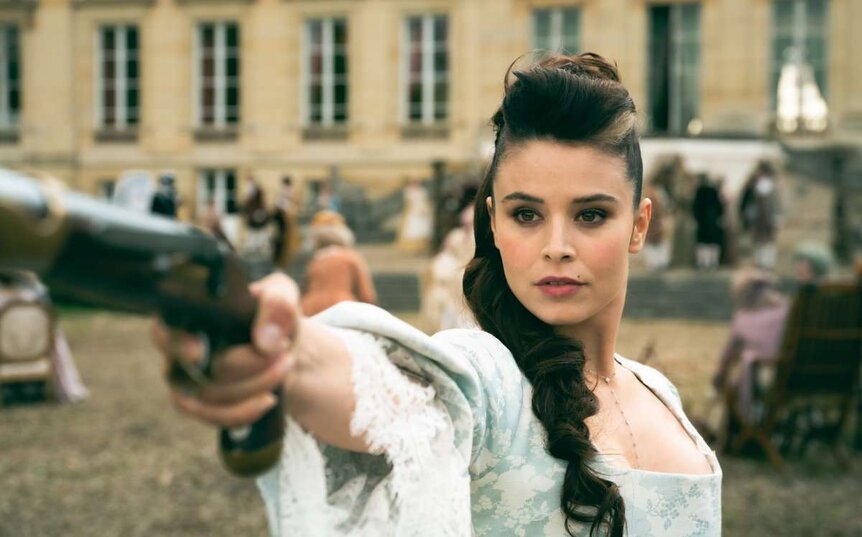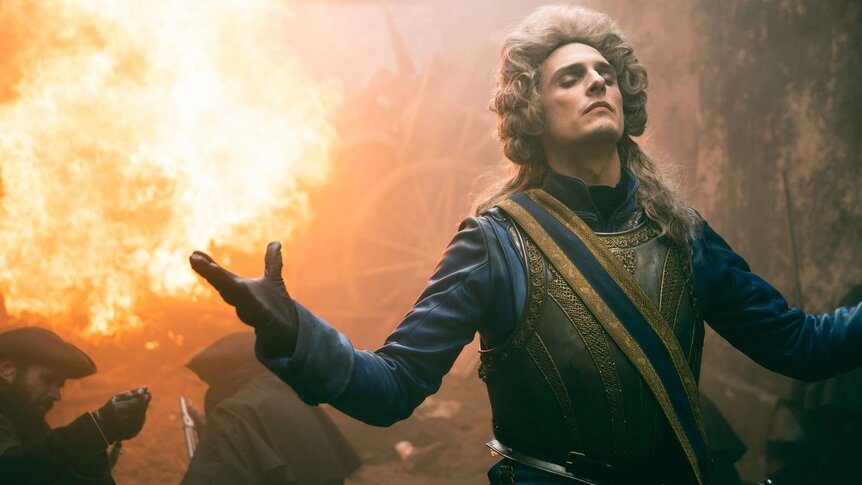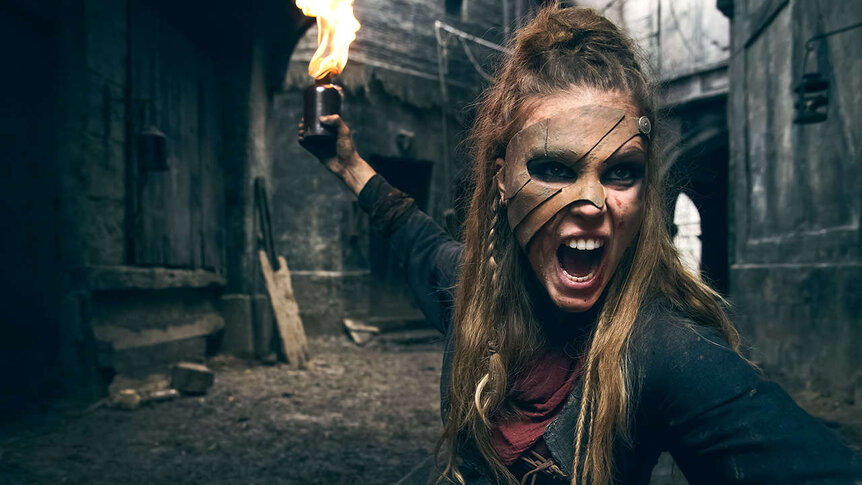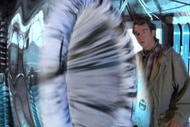Create a free profile to get unlimited access to exclusive videos, sweepstakes, and more!
Netflix's La Revolution and why we need more period horror pieces
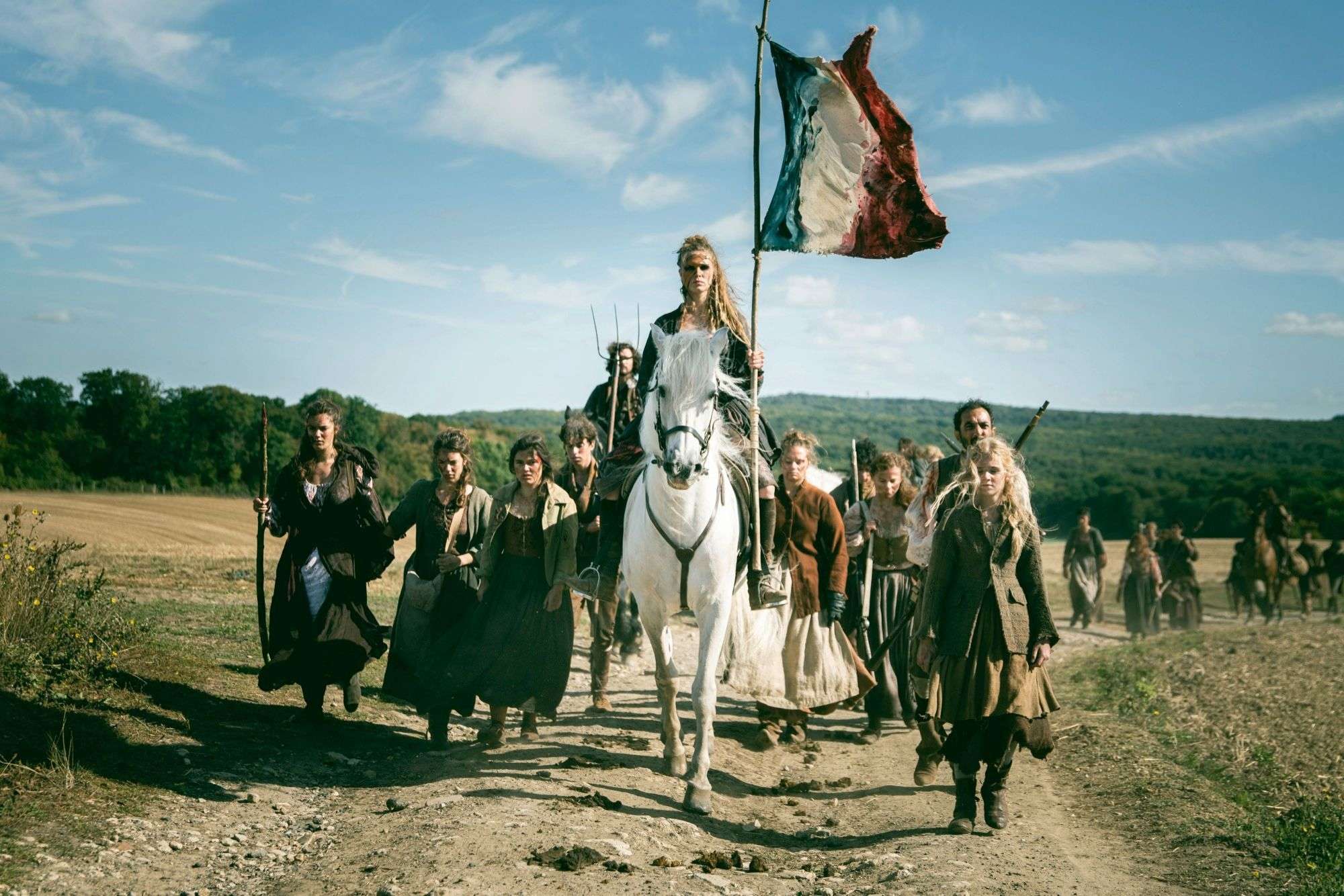
Alternate history series are all the rage at the moment, asking viewers to explore worlds that may feel familiar but are often very different and much darker than our own. Shows like Amazon's The Man in the High Castle, which depicts what the world might have looked like had the Nazis won World War II, or The Plot Against America, which sees Nazi sympathizer Charles Lindberg elected U.S. president in Franklin Delano Roosevelt's place, offer grim visions of futures we thankfully avoided. They also make for convenient commentaries on the world we live in now, and the myriad ways it, too, could veer off the rails into darkness.
Netflix's new French drama series La Revolution takes things one step further, imagining an alternate history take on the French Revolution but choosing to frame the famous period of violence and societal upheaval through the lens of horror. In doing so, the series reimagines our present as something that is built, quite literally, on the bones of the past.
Horror and period dramas don't frequently mix, and almost never outside of the realm of Gothic romance. And though we'll occasionally get parody-tinged period properties like Pride and Prejudice and Zombies or Abraham Lincoln Vampire Hunter, these aren't exactly stories that are meant to truly scare you or to make you think particularly hard. This is a shame because when done well, horror tropes can illuminate and enrich historical pieces in ways that aren't necessarily possible in modern-day stories.
The French Revolution itself is a perfect setting for a horror tale — it's already a time that epitomizes the idea of history as high drama. From its complicated, frequently self-serving, and/or dangerous main characters to its lavish visuals, unexpected plot twists, and striking set pieces, there's so much to work with from a dramatic standpoint that it's amazing we don't see more retellings that somehow incorporate this time period. Giving it the veneer of a horror story only increases all those tensions in the best sorts of ways.
This is not, of course, meant to understate the importance of the Revolution itself or the problems inherent in attempting to tell a nuanced, complex story in the broadest of speculative genre strokes. But this isn't a docudrama, it's an alt-history murder romp about people who may or may not end up eating one another, so prepare your expectations accordingly and embrace the series for what it is: an indulgent, addictive good time that isn't aiming so much to scare you as to enthrall you. (And occasionally use its horror setting to underline real-world problems we still face today.)
In the world of La Revolution, there is plenty of blood and gore, along with a growing army of murderous undead beings that can only be killed via beheading and a sinister plot that involves making the aristocracy functionally immortal by driving them to eat the poor people around them. It's the Reign of Terror in its most literal sense, a retelling that isn't so much concerned with the facts of the time period it's recreating, but the feelings behind it all. And that's actually a generally good thing.
Here, the birth of the French nation as we now understand it is fueled by otherworldly horror and death, yet those events have been subsequently rewritten by those that survived it and reframed into a more palatable tale that doesn't involve quite so many cannibals. But the bulk of the underlying issues — minus the cravings for human flesh — remain the same: poverty, mass inequality, civil oppression, and unrest.
The French people still rise up to fight for their lives against those that would shamelessly use them as fodder for their own comfort in this version of events too, but it's just all a bit more literal (and occasionally visceral) this time around. That this takes place in ways that are maybe a bit uncomfortably familiar for modern audiences is just the icing on the proverbial cake.
La Revolution is set in 1787 in the French county of Montargis, taking place two years before and about 80 miles away from the real site at which the French Revolution ostensibly begins. In the series' opening moments, it flashes forward to a blood-soaked horse, ridden by a mysterious girl intoning dire warnings about the forgetful nature of history before decapitating a man with a machete and watching disinterestedly as a fountain of blue blood gushes from his neck. It is gorgeous, high drama, and it's difficult to look away from.
This girl tells us her name is Madeleine and that what follows is a testament "on how the century of darkness became that of enlightenment," which here seems to generally mean "defeated the undead hordes," but let's just go with it.
The bulk of the story actually centers on her sister Elise de Montargis, a countess who's sympathetic to the plight of the poor in her lands and who doesn't agree with the way her fellow aristocrats treat them. Elsewhere, a doctor known as Joseph Guillotin — whose destiny to invent the iconic weapon of the Revolution suddenly lands differently in a story about vampiric flesh-eaters — is investigating the death of a local girl named Rebecca. As a peasant, her murder has largely been overlooked, but her connection to the spread of a strange disease called Blue Blood will soon bring all these disparate story threads (and others) together.
The viral outbreak that results among the French aristocracy runs squarely into a brewing uprising led by a nebulous group known as the Brotherhood, and the idea of fighting for bread and decent wages intertwines with a more immediate struggle for their very lives.
La Revolution may be heavy-handed in its metaphors — the show's very premise is a neat inversion of calls to eat the rich, after all — but the horror packaging somehow manages to make these unsubtle moments feel both fresh and powerful. The show's explanation for the meaning behind the tricolor French national flag is almost eye-rollingly obvious — it's literally stained with the blood of both sides — but it lands in an unexpectedly powerful way when draped over the bodies of both rebels and decapitated noblemen.
Watching this, it's easy to wonder why more series don't take advantage of the power inherent in these historical images, and the way that turning them into horrific warnings and cautionary tales can shake audiences up in new ways. Viva la revolution, indeed.
